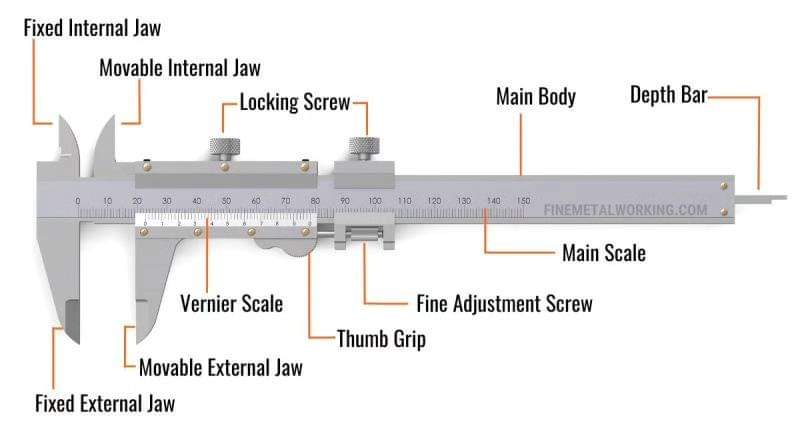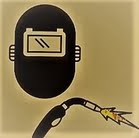A Vernier scale is a precise measuring instrument used in various scientific and engineering fields. It enhances the accuracy of measurements by allowing the user to read values between the smallest graduations on the main scale. Understanding how to read a Vernier scale is essential for anyone working with precise measurements, whether in mechanical engineering, physics, or laboratory work.
What is a Vernier Scale?
A Vernier scale is a secondary scale attached to a measuring device such as a caliper, micrometer, or height gauge. It slides along the main scale and enables measurements to be read to a fraction of the smallest division on the main scale. The most common Vernier scale measures to the nearest 0.02 mm or 0.001 inches.

Components of a Vernier Scale
Main Scale: The main scale is the larger scale engraved on the fixed jaw. Each division on the main scale represents a specific measurement unit, such as millimetres or inches. Identify the measurement units and note the value of the smallest division.
Vernier Scale: The vernier scale is located on the sliding jaw and is slightly smaller than the main scale. It consists of divisions that are spaced closer together than those on the main scale. Each division on the vernier scale represents a fraction of the smallest division on the main scale.
Zero Point: To read the Vernier scale, align the zero (0) point of the Vernier scale with the closest point on the main scale.
Look for the first line on the Vernier scale that aligns perfectly with a line on the main scale. This indicates the fraction or decimal part of the measurement.
Prepare your Caliper for work
• Before measuring, use a soft cloth to clean the measuring and sliding surfaces. The Caliper can be lubricated with a small amount of oil for smooth sliding.
• Before you begin taking measurements with the Vernier Caliper, ensure that the zero lines of the main and the Vernier Caliper coincide, and no gap can be observed between the jaws in the light.
• The slider may be moved only when the clamping screw has been unlocked. Tighten this screw to lock the measurement, if the object needs to be removed before taking the reading.
• Apply suitable force and tighten both fine adjustment screws to get an accurate measurement.
Measurement Reading Technique For Vernier Caliper
Understand the Basics:
The Vernier scale works by comparing the position of its marks with the marks on the main scale. The precision of the Vernier scale is determined by the difference between the length of one division on the main scale and one division on the Vernier scale.
Align the Object:
Place the object or workpiece you want to measure between the jaws of the Vernier caliper or on the measuring device.
Gently close the jaws or bring the scale to touch the object. Ensure that the object is securely held without applying excessive force.
Read the Main Scale:
Look at the zero mark on the Vernier scale and find the closest mark on the main scale that it aligns with or is just to the left of it.Record the reading from the main scale.
This reading represents the whole units and the largest decimal that the main scale can provide (e.g., millimeters or centimeters).
Read the Vernier Scale:
Now, look at the Vernier scale to see which of its marks aligns exactly with any mark on the main scale.
The aligned mark on the Vernier scale provides the fraction of the smallest unit from the main scale.
Calculate the Final Reading:
Add the main scale reading to the Vernier scale reading to obtain the final measurement.
For example, if the main scale reads 3.2 mm and the Vernier scale reading is 0.06 mm, the total measurement is 3.26 mm.
Why Ni+Mn% is restricted in P91 electrodes
Example
Let’s say you have a Vernier caliper with the following scales:
- Main scale: Divisions of 1 mm.
- Vernier scale: 50 divisions, where 49 divisions equal 48 main scale divisions.
Suppose you measure an object and find that:
- The zero on the Vernier scale is just past the 5 mm mark on the main scale.
- The 25th mark on the Vernier scale aligns with a mark on the main scale.
Steps to calculate:
- Main Scale Reading: 5 mm.
- Vernier Scale Reading: 25 divisions x 0.02 mm (since each Vernier division is 0.02 mm) = 0.50 mm.
- Final Measurement: 5 mm + 0.50 mm = 5.50 mm.
Common Vernier Scales
- 10-division Vernier scale: Each division is 0.1 mm.
- 20-division Vernier scale: Each division is 0.05 mm.
- 50-division Vernier scale: Each division is 0.02 mm.
Tips for Accurate Reading
- Always ensure the Vernier scale is clean and free of debris.
- Align your eye directly with the scale to avoid parallax errors.
- Take multiple readings if necessary to ensure accuracy.
Various Measuring Applications of Vernier Calipers:
Now that you know how to read a Vernier Caliper, let’s explore its various measuring applications:
Vernier Calipers are commonly used to measure the length of objects. Simply place the object between the jaws of the caliper and follow the steps outlined above to obtain an accurate length measurement.
1. Inside Measurement:
For measuring the inner diameter of objects like pipes or holes, open the jaws of the Vernier Caliper and gently insert them into the opening. Close the jaws until they snugly fit against the inner walls, and then read the measurement as described earlier.
2. Outside Measurement:
To measure the outer diameter of cylindrical objects, such as rods or tubes, position the object between the jaws and close them until they make contact with the outer surface. Read the measurement using the same method as before.
3. Depth Measurement:
Vernier calipers are equipped with a depth rod that allows for measuring the depth of holes, slots, or recesses. Extend the depth rod and gently place it inside the hole or slot until it touches the bottom. Read the measurement as usual.
4. Step Measurement:
In applications where it is necessary to measure the difference in elevation between two surfaces, Vernier Calipers can be used to measure step height. Position the jaws on each surface and read the measurement accordingly.
Common Mistakes When Reading Vernier Caliper Measurements
Despite the simplicity of reading a Vernier caliper, common mistakes can occur. Here are some potential errors and troubleshooting tips:
Misalignment:
- Mistake: Incorrectly aligning the zero (0) point of the Vernier scale with the main scale.
- Troubleshooting: Double-check the alignment before recording measurements. Ensure the zero point aligns precisely with the main scale.
Parallax Error:
- Mistake: Reading the measurement from an angle, causing a parallax error.
- Troubleshooting: View the Vernier scale and main scale directly from above to avoid parallax errors. Ensure your line of sight is perpendicular to the caliper.
Decimal Point Misinterpretation:
- Mistake: Misinterpreting the decimal point on the Vernier scale, leading to errors in the recorded measurement.
- Troubleshooting: Pay close attention to the position of the decimal point on the Vernier scale. Be mindful of whether it aligns with a main scale division or falls in between two divisions.
Vernier Scale Orientation:
- Mistake: Reading the Vernier scale upside down or in the wrong orientation.
- Troubleshooting: Always check that the Vernier scale is positioned correctly. The scale should slide parallel to the main scale, and the numbers and divisions should be easily readable.
Jaw Misalignment:
- Mistake: The jaws of the Vernier caliper are not properly aligned when measuring, leading to inaccurate results.
- Troubleshooting: Ensure that the jaws of the caliper are clean and properly aligned. Any misalignment can affect the accuracy of the measurement. If misalignment persists, the caliper may require adjustment or repair.
Neglecting Zero Error:
- Mistake: Neglecting to account for zero errors in the calibration of the Vernier caliper.
- Troubleshooting: Regularly check for zero errors by closing the jaws without any object in between. The zero on the Vernier scale should align precisely with the zero on the main scale. If there is a deviation, note the zero error and adjust future measurements accordingly.
Conclusion
Mastering the use of a Vernier scale is essential for precision measurement tasks. By carefully reading both the main scale and the Vernier scale, and adding the two readings, you can obtain measurements with a high degree of accuracy. With practice, reading a Vernier scale becomes a straightforward process that will enhance your ability to work with precise measurements in various scientific and engineering applications.
